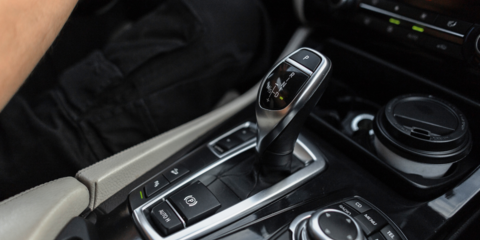
Manual vs. Automatic: What’s the difference?
We compare the pros and cons of manual and automatic gearboxes
If you’re in the market for a new car, one of the decisions you’ll have to make is whether to choose a manual or an automatic transmission. For decades, manual gearboxes have been the default option for most cars, and they are still the most common type of transmission seen on our roads.
But in recent years, automatics have surged in popularity and are now found in over 62% of new vehicles. In this article, we’ll explore the main differences between manual and automatic transmissions to help you decide which is the best choice for you.
What is the transmission in a car?
Before diving into the pros and cons of each transmission type, let’s first establish a basic understanding of what the transmission in a car is. Also known as a gearbox, the transmission is a mechanical component that plays an important role in the operation of a vehicle.
Put simply, its function is to transmit power from the engine to the wheel, whilst also changing the gears of the car which affect the speed and torque. As you may already know, there are two main types:
Manual transmission
A manual transmission requires the driver to manually change gears by using a gear stick and clutch pedal. This means that in vehicles with a manual transmission, there are three pedals: an accelerator, brake, and clutch. Typically, manuals have five or six forward gears and one reverse gear, and as they can be more complicated to drive, you’ll need a full UK driving license to get behind the wheel.
Automatic transmission
An automatic transmission, as the name suggests, shifts gears automatically without the driver’s involvement. Vehicles with an automatic transmission only have two pedals, an accelerator and a brake, as they use a torque converter to transmit power from the engine to the wheels, eliminating the need for a clutch pedal. As they are much simpler to operate, you can get behind the wheel of an automatic with only a Category B driving license.
The pros and cons of manual and automatic
Driving experience
The most significant distinction between manual and automatic transmissions lies in the driving experience. Here are some of the ways they differ:
-
Control: Manual transmission offers a higher degree of control to the driver. You decide when to shift gears, which can be favourable when driving on hilly terrain or when you want a sportier feel.
-
Engagement: Many driving enthusiasts prefer manuals for the engaging experience they provide. Shifting gears and mastering the clutch pedal can be a satisfying challenge.
-
Comfort: In heavy traffic or on long journeys, automatic transmission excels in comfort thanks to the lack of constant clutch work and gear shifting.
-
Safety: With manual transmission, the process of taking your hand off the wheel and foot off the pedal to change gears can momentarily divert focus. Automatics allow for both hands to stay on the wheel and feet on the pedals which is perceived as being safer.
-
Ease of use: The absence of a clutch pedal in automatics makes them much more user-friendly and easier to use — hence they can be driven without a full UK driving license.
Maintenance and repair costs
When it comes to maintenance and repair, manual and automatic transmissions have their own set of considerations. Generally, manual transmissions are simpler and have fewer components, making them more affordable to maintain and repair — although, if you ever need to replace the clutch, don’t expect it to be cheap.
Whereas, automatic transmissions have more complex components, making repairs potentially more costly. Furthermore, maintenance tasks like fluid changes are crucial to ensure the longevity of an automatic transmission.
Fuel efficiency
In the past, manual transmission vehicles were almost always more fuel-efficient than their automatic counterparts. Drivers could finely control their gear shifting so that they optimise fuel consumption.
However, modern automatic transmissions have made big strides in enhancing their fuel efficiency. Advanced computer-controlled automatics can now rival and even surpass the efficiency of their manual counterparts.
Availability and cost
In the UK, manual transmission is generally more prevalent and this trend continues, especially in smaller, more budget-friendly cars. Although, more recently automatic transmissions have seen a surge in popularity, especially in larger, more luxurious vehicles.
While they were traditionally considered to be the premium option with a higher price tag, the gap in cost between manual and automatic has been narrowing. The increasing demand for automatics, coupled with advances in technology, has made them more accessible and competitively priced.
Which is best for me?
The choice between a manual and automatic transmission ultimately depends on your personal preferences and driving needs. Manual transmissions offer greater control, and a more engaging driving experience, and are generally more cost-effective to maintain.
On the other hand, automatic transmissions excel in terms of comfort, ease of use, and safety in certain situations. Modern automatics have also caught up in terms of fuel efficiency and are becoming more widely available at competitive prices.
Find your next manual or automatic used car at Carlingo
If you’re in the market for your next car, check out our huge selection of both manual and automatic used cars at Carlingo. We are confident you will find the perfect vehicle that matches your needs and budget.
